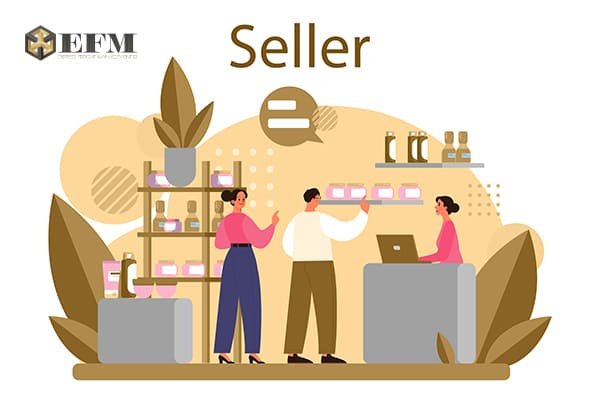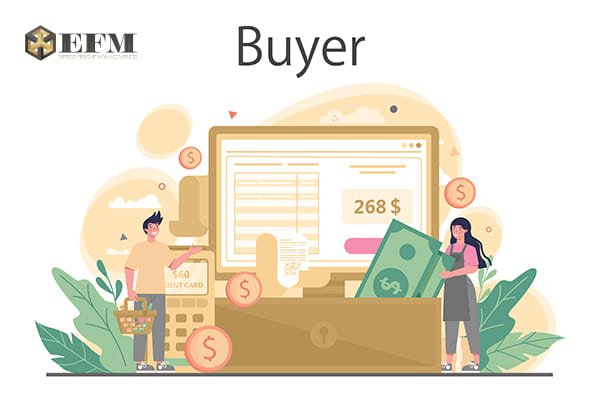CIF Incoterms: Business Guide

The complexities of international trade demand clear guidelines, a role fulfilled by Incoterms®. These globally accepted terms are published by the International Chamber of Commerce (ICC). They delineate exactly who—buyer or seller—is accountable for specific responsibilities, costs, and risks during a transaction. This standardization is key to ensuring transparency and avoiding disputes. Incoterms® were first introduced in 1936. Since then, they have been regularly revised to keep pace with evolving trade practices. The Incoterms® 2020 rules are the latest version. We will now take a closer look at a cornerstone Incoterm: CIF (Cost, Insurance, and Freight).
Disclaimer: This article provides a general overview of the CIF Incoterms and is for informational purposes only. It is not legal or professional advice. Parties should always refer to the official text of the Incoterms® 2020 rules published by the International Chamber of Commerce (ICC) and seek advice from legal and logistics services professionals when negotiating specific contract terms.
What Are Incoterms?
When buyers and sellers engage in trade, Incoterms® step in to define the rules of engagement. These are eleven internationally accepted guidelines that meticulously map out accountability. They specify who handles various tasks, covers costs, and assumes risk throughout a transaction. This framework is applicable to both international and domestic sales. The fundamental objective is to establish a universally understood set of expectations. This would in turn promote smoother dealings and minimizing the chance of disputes. Each specific Incoterm is denoted by its three-letter initialism (like FCA, FOB, EXW), signifying a unique distribution of responsibilities:
- Obligations: Which party is responsible for tasks such as transport, loading, unloading, and customs clearance.
- Risk Transfer: The precise point at which the risk of loss or damage to the goods passes from the seller to the buyer.
- Cost Allocation: Which party bears specific costs associated with the shipment.
What Is CIF?
CIF stands for Cost, Insurance, and Freight. Let’s break down what this means under the official Incoterms® 2020 rules.
First, the seller delivers the goods by loading them onto the ship at the agreed starting port. This starting port is called the “port of shipment”. The seller can also meet this duty if they provide goods that are already loaded onto a ship in this way.
Second, the seller pays for the shipping costs (this is the ‘freight’) to transport the goods to the agreed final port. This final port is called the ‘named port of destination.’
Third, a crucial part of CIF is that the seller also arranges and pays for cargo insurance. This insurance is important because it covers the buyer’s risk. If the goods are lost or damaged during the sea journey to the destination port, this insurance is there to help the buyer.
In simpler terms, when a contract is under CIF terms, the seller takes care of getting the goods cleared for export and loaded onto the ship. This includes the main shipping costs to get the goods to the buyer’s specified destination port. The seller also provides at least a basic level of marine insurance for the buyer’s benefit during that main sea journey.
Key Obligations
Understanding the division of responsibilities is paramount when using CIF.
Seller’s Responsibilities

- Goods, Commercial Invoice, and Documentation: Provide the goods and the commercial invoice in conformity with the sales contract, along with other necessary documents like a bill of lading and an insurance policy or certificate.
- Further Reading: The Importance of Accurate Documentation in Customs Clearance
- Export Packaging and Marking: Ensure goods are suitably packaged and marked for the sea voyage.
- Export Licenses and Customs Formalities: Obtain and pay for all export licenses and handle all export customs formalities.
- Pre-carriage to the Port of Shipment: Arrange and pay for transporting the goods to the designated port of shipment, which may involve domestic trucking.
- Loading Charges: Cover the costs of loading the goods onto the vessel at the port of shipment.
- Contract of Carriage: Contract for and pay the freight costs to the named port of destination. The bill of lading usually indicates “freight prepaid.”
- Insurance: Procure and pay for minimum insurance coverage (e.g., Institute Cargo Clauses (C) or similar) against the buyer’s risk of loss or damage during transit to the named port of destination. This insurance should cover at least 110% of the invoice value in the currency of the contract.
- Proof of Delivery & Documents: Provide the buyer with the usual transport document (e.g., bill of lading) and the insurance policy or certificate to enable the buyer to claim the goods or make an insurance claim.
- Costs: Bear all costs relating to the goods until they have been delivered on board the vessel at the port of shipment, plus the cost of freight and insurance to the named port of destination. The seller must also give the buyer sufficient notice that the goods have been delivered on board.
Buyer’s Responsibilities

- Payment for Goods: Pay the price of the goods as stipulated in the sales contract.
- Risk: Assume all risks of loss or damage to the goods from the moment the goods pass the ship’s rail (or are loaded on board) at the port of shipment.
- Unloading Costs: Typically responsible for the costs of unloading the goods at the named port of destination, unless these costs were included in the freight contract by the seller.
- Import Customs Formalities and Duties/Taxes: Handle and pay for all import customs formalities, duties, taxes, and other official charges at the port of destination.
- Onward Carriage: Arrange and pay for transportation from the named port of destination to their final destination, potentially as part of a door-to-door shipping
- Additional Insurance: If desired, arrange and pay for any insurance coverage beyond the minimum level provided by the seller.
- All Costs After Arrival at Destination Port: Bear all costs relating to the goods from the time they arrive at the named port of destination (excluding the main freight and insurance already paid by the seller). The buyer must take delivery of the goods when they have been delivered on board the vessel and receive them from the carrier at the named port of destination.
The “Named Port of Destination” & “Port of Shipment”
The two geographical points are of paramount importance in any CIF agreement. Failing to define them clearly in the sales contract can and will create confusion about where the seller’s core delivery duty is fulfilled, where risk transfers, and up to what point the seller bears certain costs. For instance, when shipping from China to US, specifying “a Chinese port” is insufficient, given the known challenges in shipping from China to the United States. The exact port, like “Shanghai Port, China,” is required.
Port of Shipment
The Port of Shipment is the location where the seller physically delivers the goods by loading them onto the designated vessel. This marks the point of transfer of risk from the seller to the buyer. The seller does still need to pay for the main voyage and insurance to a further location. He/she must also ensure all export formalities are completed before this point.
Named Port of Destination
The Named Port of Destination is the final port where the ship will arrive. This specific port is usually in the buyer’s country, but it can be any agreed-upon port the ship can reach. The seller has to pay for the shipping costs (freight) and the marine insurance to get the goods to this port. It’s very important to remember that this is not where the risk for the goods transfers to the buyer. The risk already moved to the buyer earlier, back at the Port of Shipment (the starting port).
Once the ship arrives at this destination port, the buyer takes over most responsibilities. The buyer then has to arrange and pay for unloading the goods (unless the seller already included this in the freight cost). The buyer also handles import customs clearance, pays any duties and taxes, and organizes any further transport to get the goods to their final stop.
Transfer of Risk & Cost
One of the most important things to grasp about CIF (and other “C” Incoterms like it) is that the moment the risk for the goods passes from the seller to the buyer is different from the point up to which the seller pays for certain costs like shipping and insurance. Think of them as two separate timelines that don’t end at the same place.
Imagine the goods are on their journey. The risk (like who is responsible if the goods get damaged or lost) shifts to the buyer quite early. As soon as the goods are loaded onto the ship at the port of shipment (the port where the main sea journey begins), the buyer is now officially bearing that risk. So, if a storm damages the cargo after it’s loaded and while the ship is sailing, it’s the buyer’s problem to sort out with the insurance company (using the policy the seller provided).
However, even though the buyer has taken on the risk, the seller is still paying for certain costs for a longer part of the journey. The seller pays for the main sea freight and the insurance premium all the way until the ship reaches the named port of destination (the port in the buyer’s country or agreed location).
So, let’s recap this key difference:
- Risk Transfer Point: At the port of shipment, when goods are on board the vessel. From this moment, the buyer is responsible if things go wrong with the goods themselves during the main voyage.
- Cost Obligation Point (for seller’s freight/insurance): Extends all the way to the named port of destination. The seller pays for the main transport and insurance up to this point.
Insurance Obligations
The “I” in CIF stands for Insurance, signifying a key responsibility for the seller, though with specific limitations that buyers must clearly understand. The seller is contractually obligated to obtain and pay for cargo insurance. However, this is (only) stipulated to be at a minimum level of coverage.
However, the buyer might want more than this basic insurance. If the goods are valuable or the journey is risky, the buyer can ask the seller to get better coverage (like “all risks” under Institute Cargo Clauses A). The buyer would usually pay the extra cost for this. Or, the buyer can arrange their own extra insurance. Buyers should always check what the seller’s insurance covers to see if it’s enough for them. If not, they could face losses if something happens that the minimum insurance doesn’t cover.
When Should You Use CIF?
CIF is a common term for shipping by sea or inland waterway, but it’s not always the best choice. It depends on your goods and who wants control.
CIF can be a good option if the seller can get good deals on shipping and insurance. Some buyers like it because they get one price that includes the goods, shipping, and insurance up to their country’s port. This can make it easier to figure out costs. CIF is often used for bulk goods like grain or oil, where the seller loads directly onto the ship.
A big warning: CIF is often not great for container shipments. Why? Because risk in CIF transfers when goods are on the ship. But containers are often dropped off at a terminal days before loading. If your container is damaged at the terminal before it’s on the ship, CIF can create confusion about who was responsible. For containers, CIP (Carriage and Insurance Paid To) is usually better if the seller is paying for carriage and insurance. With CIP, risk passes to the buyer when the goods are given to the first carrier (like at the container terminal), which makes more sense for containers.
Comparison to CFR (Cost and Freight)
Under CFR (Cost and Freight), the seller has no such obligation to arrange or pay for insurance. If the buyer wants insurance for the goods during the main sea journey, the buyer must handle it. This means the buyer is fully responsible for arranging and paying for that insurance.
Comparison to FOB (Free On Board)
In practice, the decision between FOB and CIF often depends on which party has more advantageous arrangements with shipping lines and insurers, or which party prefers to manage that particular segment of the transportation process. It is also important to note that, similar to CIF and CFR, FOB is designed for sea or inland waterway transport.
Tips To Remember

If your US business uses CIF, whether buying or selling, here are some practical tips:
First, get your documents right. The invoice, packing list, bill of lading (the shipping contract), and insurance paper must be accurate and all match the CIF terms in your sales contract. They need to correctly list the goods, amounts, value, and the specific ports of shipment and destination. Good paperwork is essential for customs and any insurance claims.
Second, be very clear about the “Named Port of Destination.” This is where the seller stops paying for freight and insurance. Any confusion here can lead to arguments about who pays for what at the destination.
Third, if you’re a US buyer, check the insurance. CIF only requires minimum cover. This might not be enough for your goods. See if you need more protection and discuss with the seller or get your own extra insurance. Know who the insurer is and how to claim.
Finally, communication is key. Talk regularly with your trading partner and the shipping companies. Share updates on ship schedules and send documents quickly. Good communication helps avoid delays and problems.
Examples
To illustrate how CIF functions in real-world scenarios, consider its application in trade between the US and ASEAN countries.
Imagine a California store buys tables CIF Port of Los Angeles from Vietnam. The Vietnamese seller pays for shipping and insurance to Los Angeles. But the Californian buyer takes on the risk for the tables as soon as they are loaded onto the ship in Vietnam. When the ship arrives in LA, the US buyer handles import customs, taxes, and getting the tables from the port to their store.
Alternatively, consider a chemical producer in Texas selling a bulk shipment of industrial polymers CIF Port of Singapore to a manufacturing company in Malaysia (who will then arrange onward transport from Singapore). The US exporting company will contract and pay for the ocean freight from a US port, perhaps Houston, to the Port of Singapore. They will also arrange and pay for the minimum marine insurance coverage for the polymers during this main transit. The risk of loss or damage to the chemical shipment is transferred once the polymers are loaded onto the ocean-going vessel at the Port of Houston. Upon arrival in Singapore, the buyer assumes responsibility for all subsequent activities. This includes customs clearance at Port of Singapore (and that of Malaysia), payment of any import duties or taxes, and arranging the logistics for moving the polymers to their facility in Malaysia.
The principles discussed in these US-ASEAN examples are broadly applicable to trade across the region. Whether your business involves:
- Shipping to Singapore or shipping from Singapore to USA
- Shipping to Indonesia or shipping from Indonesia to USA
- Shipping to Vietnam or
- Shipping to Philippines
A clear understanding of the CIF Incoterms is beneficial.
Conclusion
CIF (Cost, Insurance, and Freight) is a well-known Incoterm for sea transport. The seller pays for the goods, the main journey to the named destination port, and arranges minimum insurance for the buyer’s risk during that trip. But remember, the buyer takes on the risk much earlier, at the port of shipment, as soon as the goods are on the ship. This can be a convenient way to transact, especially if the buyer wants the seller to handle shipping and initial insurance. Remember that CIF is usually better suited for non-containerized cargo due to its unique risk transfer protocol.
Incoterms like CIF have many details that affect your costs and risks. If you’re unsure how to use CIF or other terms for your specific shipments, it’s always smart to talk to a logistics expert or a trade advisor. They can help you choose the best terms for your business. At Express Freight Management, we understand the nuances of Incoterms and the critical role they play in your supply chain. Our experienced team is ready to provide expert guidance and comprehensive freight forwarding services tailored to your specific needs, whether you’re shipping to or from the USA, engaging in ASEAN trade, or require specialized logistics solutions. Don’t let the complexities of international shipping hinder your business growth. Contact us today to discuss how our freight forwarding expertise can help you leverage CIF and other Incoterms effectively, ensuring your cargo moves smoothly and efficiently across borders.
Streamline your logistics with Express Freight Management – your trusted partner for seamless global shipping solutions. As a leading international freight forwarder based in the United States, we have successfully managed trades between the United States and Brunei, Cambodia, Indonesia, Laos, Malaysia, Myanmar, Philippines, Singapore, Thailand, and Vietnam for nearly two decades. With expert knowledge, advanced technology, and a commitment to reliability, we provide seamless logistics management that helps you focus on what matters most—growing your business.



